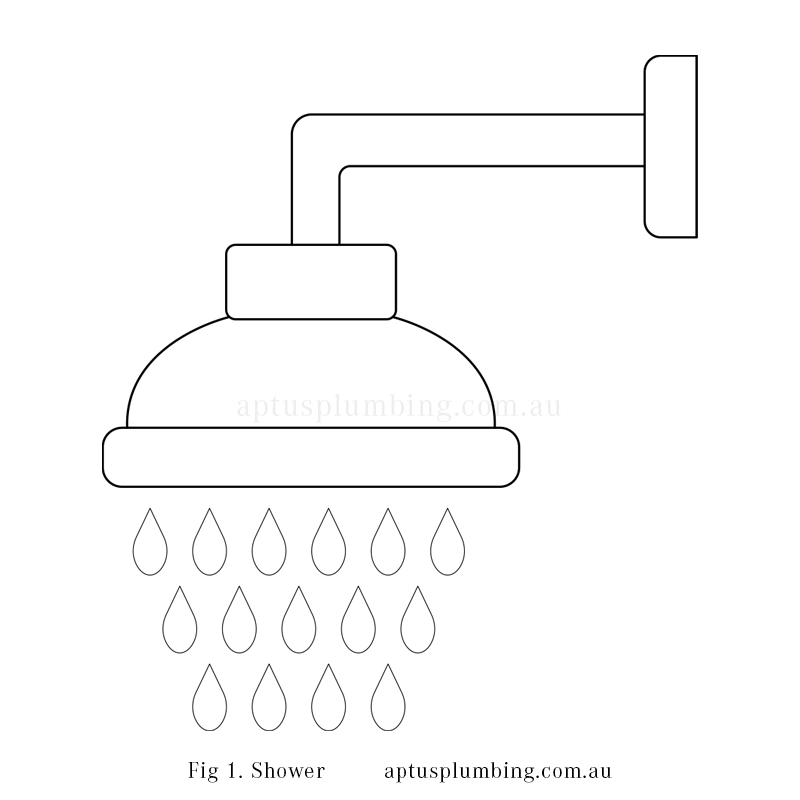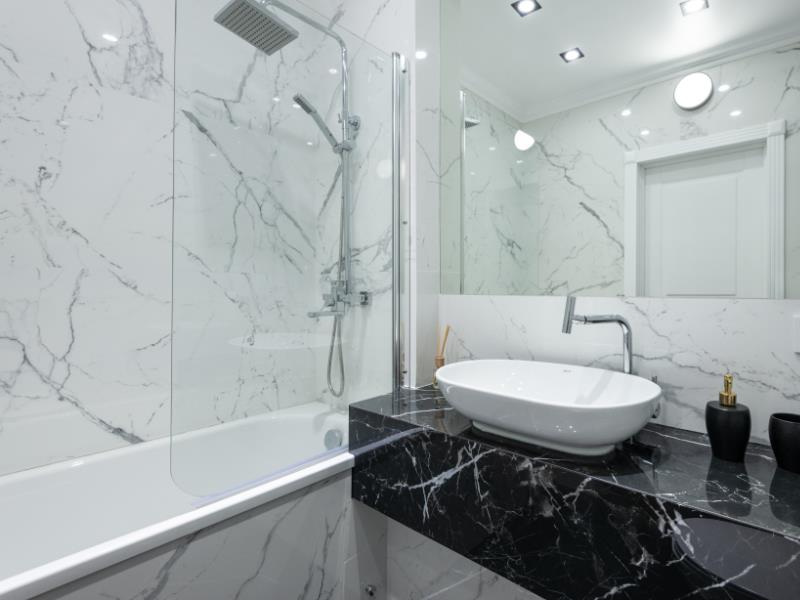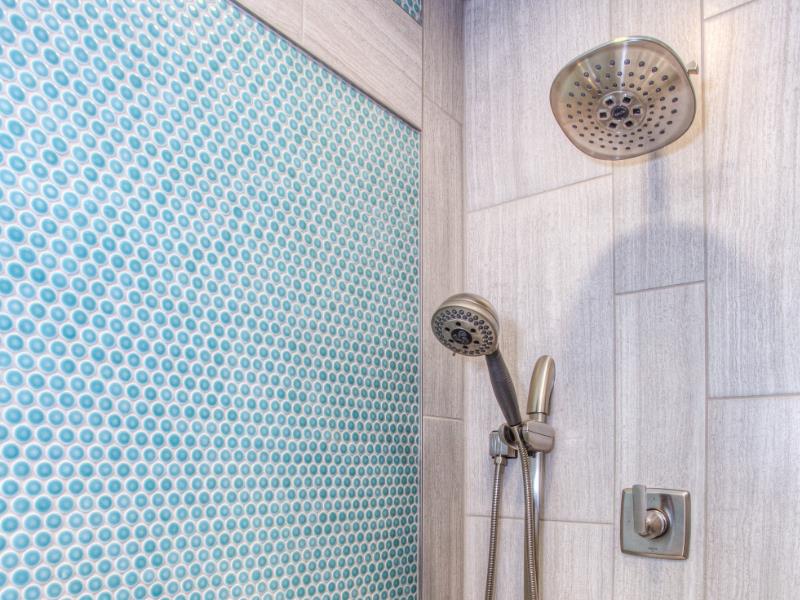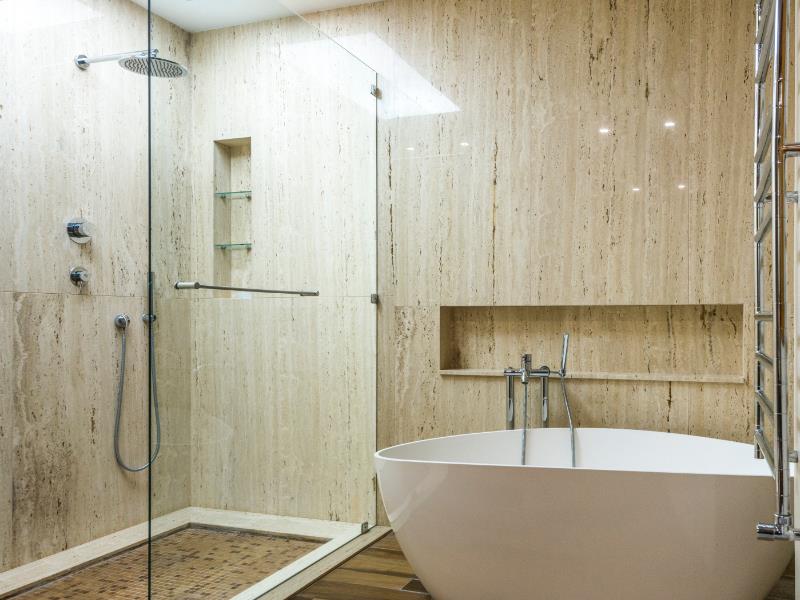Showers
Home / Wiki / ShowersLast updated Thu 10 Mar 2022
Showers are the prevalent method of bathing in Western society, as it is much more water-and-energy-efficient than utilising a bathtub, especially if the user is bathing in heated water. Showers are typically constructed in a stall-like manner, and require a showerhead of some description to be suspended above the user. Simple showers, which are typically utilised in public locations such as beaches or gym locker rooms, are nothing more than a fixed showerhead and a faucet handle, while more complicated setups may involve placing the showerhead on a loose hose so that it may be both hung above the user or held in the hand to clean specific body parts.
The Development Of Showering

Aptus Plumbing and Gas Shower
Before the invention of plumbing, the process of bathing was reliant on natural formations. While some societies utilised lakes and other bodies of water for bathing, there is also a history of showering present even within ancient societies that lived without plumbing, thanks to the natural formation of waterfalls.
Waterfalls provided humans with more efficient bathing practices as opposed to bodies of water, as the waterfall worked to automatically provide fresh water while also transporting the wastewater away. As a consequence, various early societies replicated this practice by pouring jugs of cold water over themselves and bathing that way, and by the time of both the Egyptians and Mesopotamians, servants were employed by the wealthy to 'shower' them within the privacy of their own homes.
These systems were still hand-operated, however; it was not until the Ancient Greeks' early blueprints for modern plumbing that automated showers would be created. The Greeks created communal shower rooms for both the wealthy and the poor, and their plumbing and sewerage systems automated the process of delivering fresh water and removing waste. These shower rooms were not unlike modern locker room showers, including many provisions standard in modern showers, including racks for clothes and towels. While the practice of bathing was not central to the Greeks, the Romans viewed it as incredibly important, going so far as to encourage daily bathing. Unfortunately, once the Roman Empire fell, plumbing systems fell into disrepair across their territory, and it would be quite some time before automated showers would be seen again.
Come 1767, William Feetham, an Englishman, created the first hand-pumped mechanical shower. It was a simple machine that required the user to pull on a chain, which would tip a jap above their head, pouring water over their body. This design was improved in 1810, though the new creation still required about 3m of vertical space to function. Indoor plumbing became far more common in the 1850s, and with it, the same shower systems we still use today began to be introduced to the world. The French can be credited with being the first to introduce indoor showers widely throughout various government facilities, including in the barracks for various French Army bases and within a prison in Rouen, under the argument that showers would be able to bathe more people at once while using less water, making them a cheaper and more time-efficient option when compared to communal bathtubs. Showers became more common around the world following these changes, and today, they are widespread throughout Western society, appearing not only in our homes, but in numerous shared spaces as well.

A dual shower-bath stall.
Where Can You Find Showers Today?
Domestic Spaces
While domestic-based showers are typically built as standalone stalls, they can also be built in combination with a bathtub. Normally, stall showers use either a shower curtain or a door to contain water within the shower, while a combined shower/bath will instead present the occupier with both options while saving space within the bathroom. These combination units most commonly utilise sliding shower curtains to contain the spray of the shower while it is in use, and they can then be pulled back to allow easy access in and out of the bath.
Public Spaces
Wherever you might expect the public to work up a considerable amount of sweat, thus becoming significantly odorous, you are also likely to find public showers. Typically, these are available in gyms and pools, and can even be found at a large number of beaches around Australia. The gym and pool showers can take different forms, usually either in the shape of individual stalls for privacy or as a large, communal shower room, though both options are typically gender-segregated.

A shower with two showerheads
At beaches, however, the showers are instead typically positioned in an open space, and it is expected that the shower will be used to clean sand off of the user. With this in mind, the user is expected to remain partially clothed during these showers, normally in swimwear, and they can then shower again at home to properly clean themselves.
Alternative Forms Of Showering
While water-based showers remain the most common in Western society, some other types of showers do see use in the modern-day. For instance, in cleanrooms, air showers are utilised to remove dust and other fine particles from users, while many laboratories and schools are required to install and maintain 'emergency showers' designed to operate for standard periods of time to remove any potentially hazardous chemicals or materials from the skin, hair, or eyes of the user.
You can also install a specific showerhead to suit your needs, with differing showerheads offering different capabilities. Fixed showerheads constantly remain in the same position and angle, while handset showerheads can be removed and held in the hand thanks to the addition of a flexible hose. Many showerheads include adjustable modes that can be used for various purposes, including changing the pressure of the flow of water, or the user can opt for a radically different showerhead design, including ceiling-mounted faucets that rain water down or wall-mounted shower panels that force out a large, vertical wall of water via numerous horizontal streams for the user to stand within.

A seperate shower and bath.
Mitchell Severns
22 Mar 2024
Verified
Had Mitch from Aptus come out to my rental over the weekend to sort out my hot water - super quick to arrive at the property and got the job done with ease, top bloke 👍🏼
Samantha Dar
22 Mar 2024
Verified
Had a gas leak and the response from Aptus was immediate. The guy that came out after hours was Mitch. He was fantastic, informing me of his ETA. He was efficient, friendly and helpful. He got the job... more
Karishma Yanamandala
15 Mar 2024
Verified
I loved aptus plumbing and gas. The quality of work was excellent. The customer service was excellent. My family was extremely pleased with the work performed. Aptus was efficient, reasonable and kind... more

We happily service all areas of Brisbane. Get in touch today.
And enjoy peace of mind with a dedicated team on call 24/7
